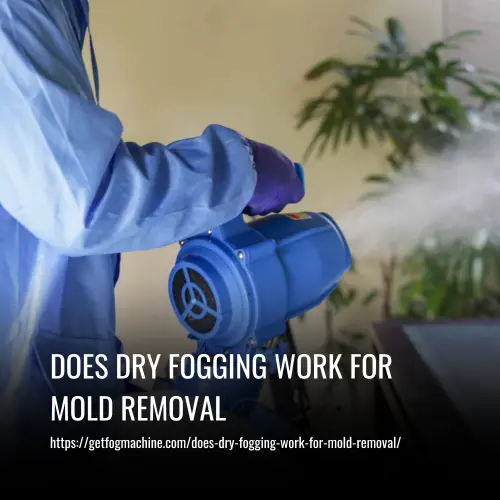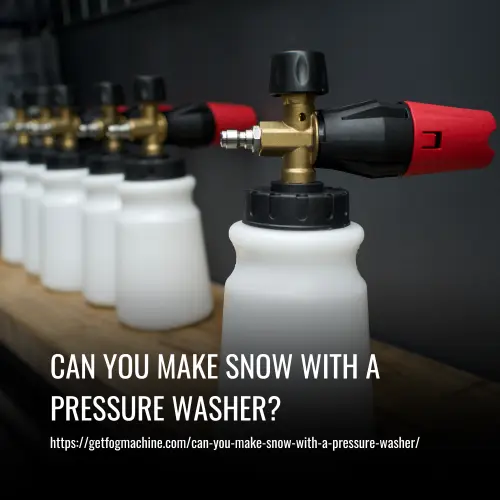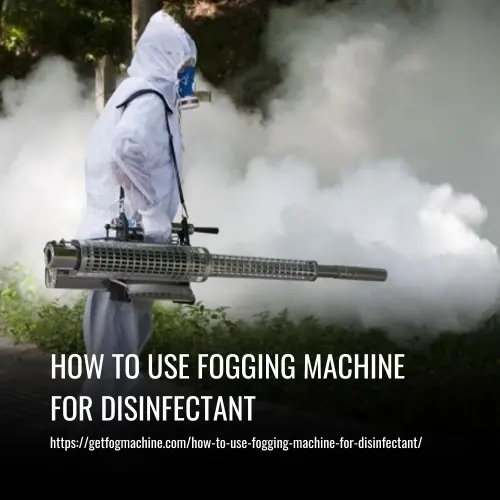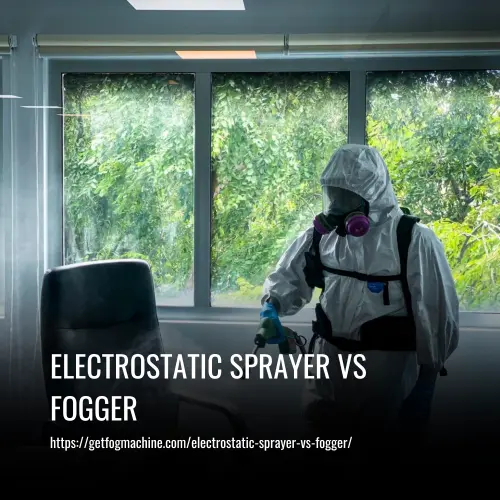Dry Fogger vs. Wet Fogger: What is the Difference?
This post contains affiliate links. As an Amazon Associate, we earn from qualifying purchases.
The main difference between a dry fogger and a wet fogger lies in the diameter of the droplets they produce. A dry fogger emits smaller droplets, typically around 10 to 15 microns in diameter, while a wet fogger emits larger droplets, usually between 20 and 30 microns. This difference in droplet size affects the way these foggers come into contact with surfaces.
Dry foggers are more suitable for disinfecting electronic equipment, delicate materials, and hard-to-reach areas, as the smaller droplets can more easily penetrate these surfaces without causing damage or leaving excess moisture.
Wet foggers, on the other hand, are better suited for disinfecting porous surfaces, as the larger droplets have more contact with the surfaces and can cover a wider area. Both dry foggers and wet foggers have their own applications and can be valuable tools in different scenarios.

What is a Dry Fogger
A dry fogger is a machine that emits a fine mist of droplets with a diameter of around 10 microns. These droplets are created by passing a compressed gas through a small nozzle at high pressure, resulting in a fine spray.
The small size of the droplets allows them to remain suspended in the air for extended periods of time, making dry foggers ideal for fogging large areas like warehouses and factories.
However, the drawback of dry fogging is that the smaller droplets may not provide full coverage of the intended area, suggesting that multiple fogging sessions may be necessary for thorough treatment.
What is a Wet Fogger
A wet fogger is a machine that emits a mist of droplets ranging between 20 and 30 microns in diameter. It uses a pump to draw liquid from a reservoir and forcefully expels it through a small nozzle under high pressure. This allows for the creation of larger droplets, which are better suited for tasks such as cleaning, mold control, and targeted insecticide application.
The high-pressure pump enables the wet fogger to emit larger droplets than a dry fogger. However, these droplets fall to the ground more quickly, making them ideal for fogging smaller areas such as homes and offices. With adjustable spray volume and droplet size, most cold or ULV foggers have the capability to produce both dry and wet fog.
What is the Difference Between a Dry Fogger and a Wet Fogger
Here are some Key Difference Between a Dry Fogger and a Wet Fogger.
1. Droplet Size
The main difference between a dry fogger and a wet fogger is the diameter of the droplets they emit. A dry fogger produces smaller droplets, typically between 10 and 15 microns in diameter, while a wet fogger produces larger droplets, between 20 and 30 microns in diameter.
2. Airborne Coverage
The size of the droplets affects how long they stay airborne. Dry fogger droplets remain suspended in the air for longer periods, allowing them to reach all corners of the room and penetrate hard-to-reach areas. Wet fogger droplets, being larger, fall to the ground more quickly, limiting their ability to cover the entire room effectively.
3. Liquid Consumption
Dry foggers use less liquid compared to wet foggers due to the smaller droplet size. The smaller droplets of a dry fogger evaporate faster, resulting in lower liquid consumption. This factor can be important for those on a limited budget or needing to fog large areas.
4. Liquid Compatibility
The type of liquid being used is another consideration. Dry foggers can accommodate both water-based and oil-based liquids, while wet foggers can only work with water-based liquids. If there is a significant amount of dust in the area to be fogged, using an oil-based liquid in a dry fogger can be more effective.
5. Coverage Area
When considering the size of the area that needs to be fogged, a dry fogger is typically more suitable for larger spaces. Due to the smaller droplet size and wider distribution capabilities, a dry fogger can cover a larger area compared to a wet fogger.
What Are The Benefits Of Using A Dry Fogger
Dry foggers offer several advantages over wet foggers, making them a popular choice for various applications. Here are the key benefits of using a dry fogger:
1. Cost-effectiveness
Dry foggers require less liquid compared to wet foggers. This not only saves on the cost of the disinfectant or cleaning solution but also makes it a more economical choice for fogging larger areas.
2. Wide coverage
Dry foggers are capable of diffusing widely in the air and covering a larger expanse, making them suitable for treating large areas efficiently. This makes them a valuable tool for various applications, such as disinfection, mold control, and pest control.
3. Flexibility in liquid selection
Dry foggers can be used with both water-based and oil-based liquids. This offers flexibility in the selection of disinfectants or cleaning solutions, allowing users to choose the most suitable option based on the specific needs of the area being treated.
4. Effective penetration
The smaller droplets produced by a dry fogger stay airborne for longer periods. This enables them to reach all corners and crevices of a room, including hard-to-reach areas. This makes dry foggers particularly useful for treating porous surfaces, electronic equipment, and air currents where mold spores or pathogens may hide.
What Are The Benefits Of Using A Wet Fogger
Wet foggers offer several advantages in various fogging applications. Here are some key benefits of using a wet fogger:
1. Effective for smaller areas
Wet foggers emit larger droplets compared to dry foggers. These larger droplets fall to the ground more quickly, making wet fogging more effective for treating smaller areas. This makes wet foggers a valuable tool for targeting specific spaces, such as individual rooms or localized areas.
2. Suitable for water-based liquids
Wet foggers are designed to be used with water-based liquids only. This means that they are particularly effective for fogging with disinfectants or cleaning solutions that are water-based. This makes wet foggers a suitable choice for applications where water-based products are preferred or required.
3. Quick and efficient application
Due to the larger droplet size, wet foggers provide a faster application process. The larger droplets cover a wider surface area in a shorter period, making wet fogging a more time-efficient method for fogging.
4. Versatile applications
Wet foggers can be used for a variety of applications, including disinfection, pest control, and odor removal. The larger droplets emitted by wet foggers are effective at targeting and neutralizing unwanted pests or pathogens in the treated area, making them a valuable tool in various industries such as hospitality, healthcare, and agriculture.
How to Choose the Right Fogger for You
When it comes to choosing the right fogger for your needs, it’s important to consider the specific requirements of your fogging application. Here are some factors to keep in mind when deciding between a dry fogger and a wet fogger:
1. Area Size
If you need to fog a large area, such as a warehouse or factory, a dry fogger is the best choice. Dry foggers emit smaller droplets, which allows the fog to disperse over a larger area, covering more ground efficiently. On the other hand, if you’re fogging a smaller area like a home or office, a wet fogger is more effective. Wet foggers emit larger droplets that fall to the ground quickly, providing thorough coverage in smaller spaces.
2. Liquid Compatibility
Consider the type of liquid you plan to use with the fogger. Dry foggers are designed for use with oil-based or solvent-based liquids, while wet foggers are designed for water-based liquids. If you need to fog with a water-based disinfectant or cleaning solution, a wet fogger is the appropriate choice. Wet foggers ensure optimal performance and effectiveness with water-based products.
3. Application Efficiency
Another important factor to consider is the speed and efficiency of the fogging process. Dry foggers cover a larger surface area in a shorter period of time due to the smaller droplet size. This makes them ideal for fast and efficient fogging in larger areas. Wet foggers, on the other hand, are advantageous for their quick application process in smaller spaces. The larger droplets allow for faster coverage in localized areas.
4. Versatility
Think about the range of applications you may need the fogger for. Dry foggers are well-suited for industrial purposes such as pest control or odor removal in large spaces, while wet foggers excel in domestic or office settings. Wet foggers are also commonly used in healthcare, hospitality, agriculture, and other industries requiring targeted treatments.
By considering these key factors, you can make an informed decision about whether a dry fogger or a wet fogger is the right choice for your specific fogging needs.
FAQs
The main difference between a dry fogger and a wet fogger is the diameter of the droplets they emit. A dry fogger emits droplets between 15 and 30 microns in diameter, while a wet fogger emits droplets between 20 and 50 microns in diameter. This difference in droplet size affects the coverage and penetration capabilities of the foggers.
A dry fogger fumigates the whole room with a dry, white cloud of fog that stays in the air during the treatment. It is designed to penetrate deep into cracks, crevices, and hard-to-reach areas, killing bugs where they hide. The fog can also reach underneath furniture and appliances, ensuring thorough treatment.
Hot foggers, also known as thermal foggers, use heat to vaporize the fogging liquid, creating a fog that is dispersed into the air. This type of fogger is effective for outdoor use and can cover large areas. Cold foggers, also known as ULV (ultra low volume) foggers, use air pressure to spray the liquid application in small particles. These foggers are suitable for indoor use and can effectively treat smaller spaces.
Conclusion
Whether you choose a dry fogger or a wet fogger, the most important thing is to prioritize the safety and effectiveness of your pest control efforts. Consider the specific needs of your situation, the type of pests you’re dealing with, and the desired outcome.
With the right fogging technique and product, you’ll be able to eliminate pests and create a healthier, more comfortable environment for you and your loved ones. So, fog away and say goodbye to those pesky pests!






